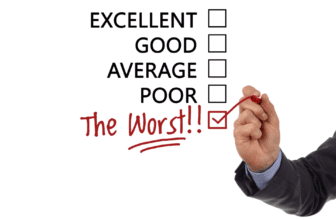As a business person one of the documents that you must take seriously is your competitor analysis. It should be one of the most important weapons in your business arsenal.
A competitor analysis will not only show you who your biggest competitors are, but it will also sharpen your product or service offering. It will highlight your weak areas and show you the things that you need to work on. It will give you an insight into new audiences you didn’t think you could reach. It can show you potential revenue areas you hadn’t noticed.
Most importantly, it will reduce your chances of being knocked out of the market. Keeping a keen eye on your competitors will help give you an edge. You’ll ensure that your product or service remains unique. It will help grow your business.
Pushing forward on your own agenda is great, but keep an eye on those around you. Are they creating a rival product that will kill yours dead? Are they planning to take over a vital sector of your audience?
All businesses know that they should be doing this analysis, but many don’t know where to start. That’s what today’s post is all about.
But first…
What Is Competitor Analysis
BusinessDictionary.com defines competitor analysis thus:
“[A] Strategic technique used to evaluate outside competitors. The analysis seeks to identify weaknesses and strengths that a company's competitors may have, and then use that information to improve efforts within the company. An effective analysis will first obtain important information from competitors and then based on this information predict how the competitor will react under certain circumstances.”
How to Write a Competitor Analysis
1. Make a list of your top ten competitors
First things first, get to know your market. Who are the big players and your main rivals? Don’t be afraid to think big here. If you’re a new social media company, then Facebook is your competitor, put them on the list. So are the smaller college-only networks, put them on the list. Big or small, if they serve the same function, they are a competitor. Use a company search tool to find businesses you don’t know about. Return to this list regularly and update it.
2. Ask yourself how your product compares to your competitors
Be critical here. Look for the weaknesses and downsides to your product in comparison to others. Ask people whose advice you trust for their opinion too. Make sure your product differs slightly to everyone on your list of ten competitors. Keeping an eye on the products of your competitors will help yours stay unique and strong.
3. How are they marketing themselves?
Who are they targeting their products and services to? Are they using social media or traditional marketing? Are they engaging a sector of society that you could be? Look to see if they’ve tapped into a community that you could also benefit from. Competitor analysis is a great way to identify new markets you didn’t know existed. Find a new and unique way to market to these communities.
4. How does your pricing compare?
Competitor analysis is a good way of checking whether your pricing is accurate. Try to match those around you. Too high and you may be pricing yourself out of the market. Too low and you’re losing a lot of potential profit. In most industries, lowest price isn’t always best. Customers like to be assured of quality and will happily pay for it. Use your competitors to determine a sensible price.
Conclusion
This is a small introduction to competitor analysis and its importance. Don't forget to look for indirect competitors. They might not offer the same product but operate in the same world. Take notes from them too in order to understand the bigger picture.






Your Post is very Used full thanks for Shearing I am really enjoyed this post.